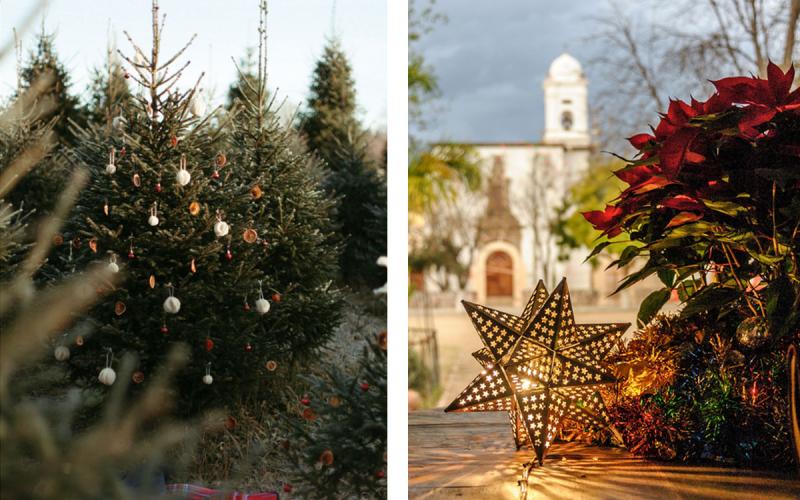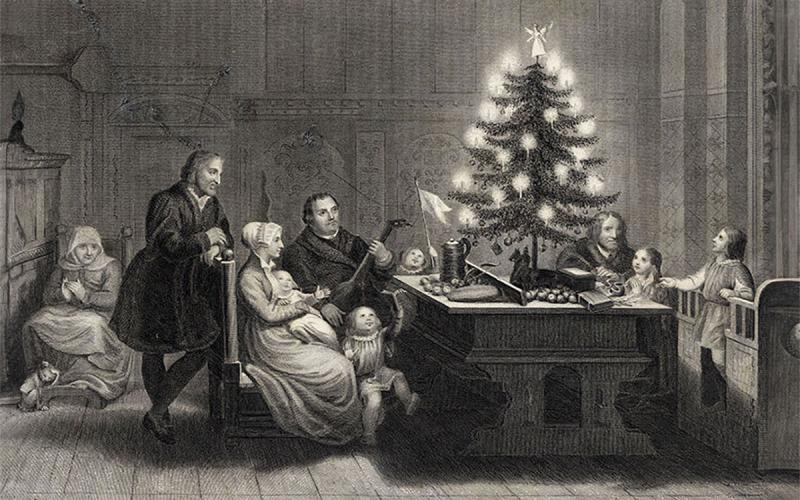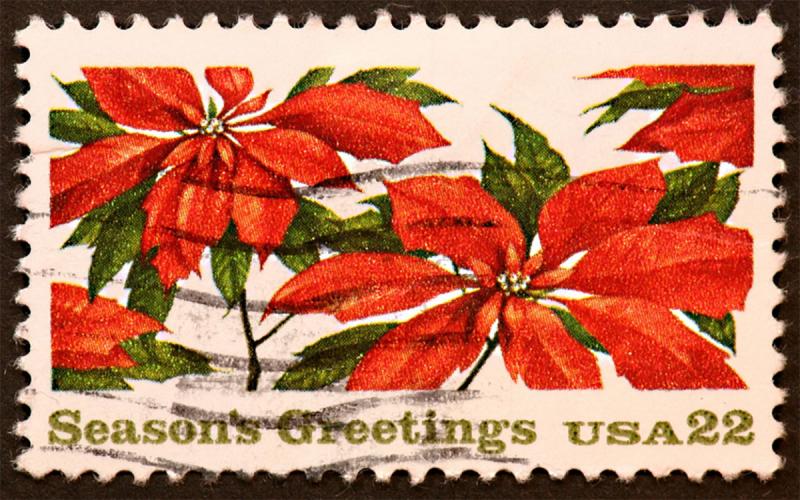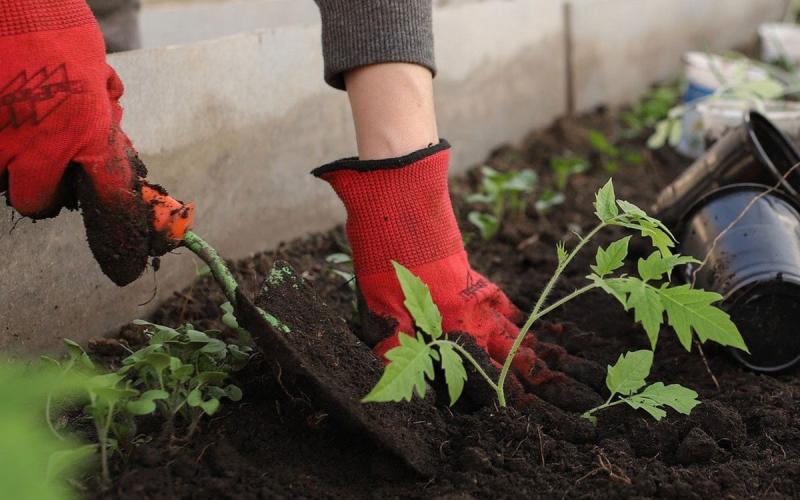
Written collaboratively by Robin Buterbaugh and Rhoda Burrows, former Professor & SDSU Extension Horticulture Specialist.
Christmas trees and poinsettias are the two plants that symbolize the Christmas season for many people around the world. But why do these plants hold the place that they do in our Christmas celebrations? And where did the association with Christmas originate?
Christmas Trees
The earliest documented instances of decorated Christmas tree are from Northern Germany and Latvia in the 1500s and 1600s. However, earlier religious observances in Rome (Saturnalia) and in Europe (Yule) also depict decorated evergreen trees as part of their religious symbolism and midwinter solstice festivals. It is often proposed that these practices were assimilated into the Christian traditions, including the adoption of the Christmas tree, to ease the conversion to Christianity by maintaining some of the traditions of earlier religious celebrations. One story recounts that an oak tree used for a Yule celebration in Europe was cut down by a priest, and behind it sprung up a fir tree, meant to symbolize eternal life.
The use of Christmas trees in Europe was popularized by Queen Victoria and Prince Albert. The Christmas tree tradition spread to the United States by Hessian troops, who were brought to fight in the American Revolution. Christmas trees became more popular throughout the 1800s, and soon concerns for the ecological impact of evergreen tree removal prompted the start of Christmas tree farms and the use of artificial trees. Currently, it is estimated that there are 25 to 30 million real Christmas trees and approximately 20 million artificial trees sold in the United States each year.

If you do decorate with a real Christmas tree, don’t throw it in the landfill when the holidays are over! A Christmas tree disposed in a landfill can generate up to 35 pounds of CO2, but if you recycle or upcycle it, that number is less than 8 pounds. There are many ways that your Christmas tree can also benefit your landscape and wildlife:
- Take your Christmas tree to a community composting area if you have one. Some communities have Christmas tree recycling programs, and the trees can be placed on the curb for pickup.
- Chip the entire tree and use it for mulch in your landscaping beds.
- Remove the branches and use them to make wreaths or outdoor décor.
- Use the whole tree or branches to create wildlife habitat in your yard or in a pond.
Poinsettias
To many people in the United States and around the world, poinsettias are a colorful symbol of the Christmas holiday. However, the cultural history of the cuetlaxochitl (kwet-la-sho-she) pre-dates its use at Christmas, and in fact, it was originally cultivated by the Aztecs prior to European colonization. In its native range of southern Mexico and Central America, cuetlaxochitl grows as a large shrub or tree, and the name cuetlaxochitl means “mortal flower that perishes and withers like all that is pure.” The Aztecs used this plant for ceremonial decoration, production of dyes, and for medicine.
In Mexico, cuetlaxochitl blooms by the month of December in response to the lengthening nights after the autumn equinox. Legend has it that in the 17th century a young woman went to visit a nativity scene at a chapel on Christmas Eve, but did not have money to buy a gift. Instead, she gathered a bundle of plants from the roadside to form a bouquet, and when the bouquet was placed at the nativity scene, the flowers bloomed into bright red flowers, and the plant was then known as flor de nochebuena (Christmas Eve flower). After that, Spanish friars began using the plant in nativity procession,s and the colors of red and green became associated with Christmas.

In 1825, John Poinsett, the U.S. Ambassador to Mexico, became captivated by the plant and began shipping plants to his greenhouse in South Carolina, where he grew and shared them with friends and family. Soon a nursery owner began cultivating the plants, and in the 1830s the name “Poinsettia” caught on. Currently, the poinsettia is the most-popular plant sold during the holidays, with approximately 35 million sold and nearly $250 million in sales. In the United States, December 12, Poinsett’s birthday, has been named by the Congress as National Poinsettia Day. However, Poinsett’s association with slaves and the displacement of Native Americans have led some groups to advocate for using the name cuetlaxochitl instead of poinsettia.
Poinsettia/Cuetlaxochitl Care
- Light: Provide at least 3 to 4 hours of direct sunlight daily during the winter.
- Temperature: Place plants in a warm and draft-free location with night temperatures between 60 to 65 degrees Fahrenheit and daytime temperatures at 68 degrees Fahrenheit or higher.
- Humidity: Use a portable humidifier or set pots in a saucer or tray filled with gravel and water (but keep the water level low enough so that water can still drain freely from the pot).
Poinsettias do not require fertilizer during the flowering period. Poinsettias can be kept after the holidays and will rebloom if the appropriate light and dark periods are followed throughout the year.
References and Resources:
- Yard and Garden: Learning about Christmas Tree Facts and Legends, Iowa State University.
- How Did the Tradition of Christmas Trees Start?, Britannica.
- Upcycle that old Christmas Tree, University of Illinois.
- Which Christmas tree is better for the environment – real or artificial?, Purdue University.
- What should I do with my poinsettia after the holidays?, Iowa State University.
- Poinsettia History, NC State University.
- What is the history of the poinsettia?, Iowa State University.


